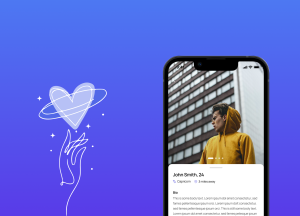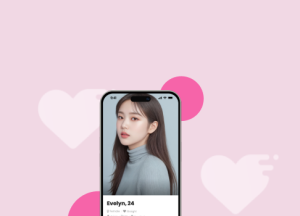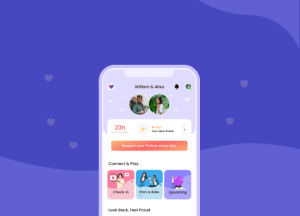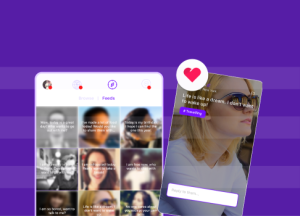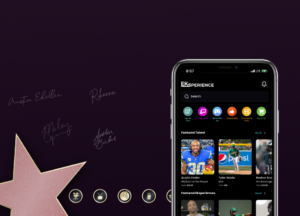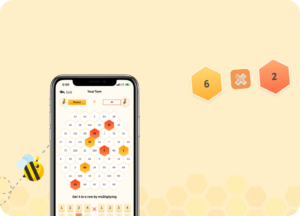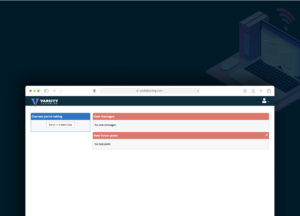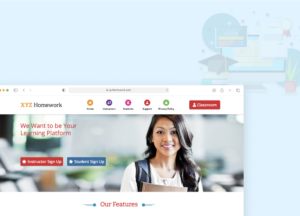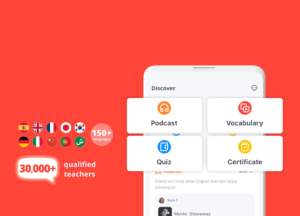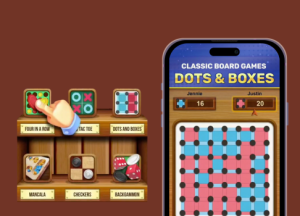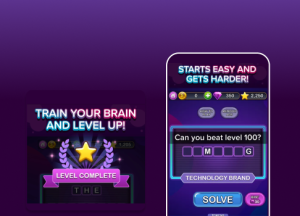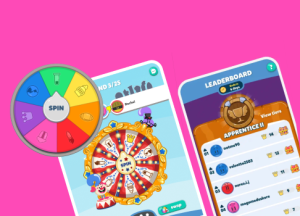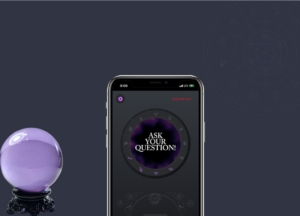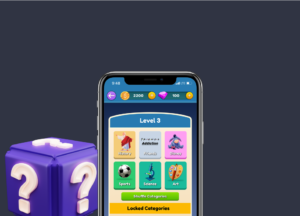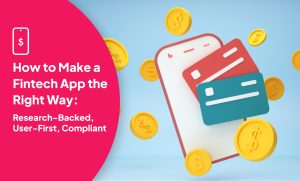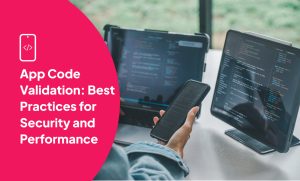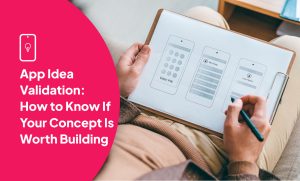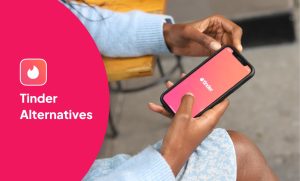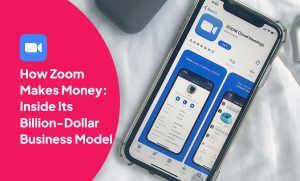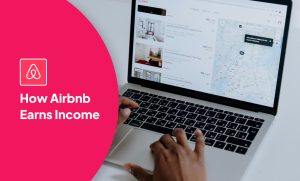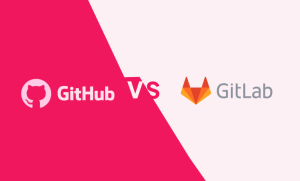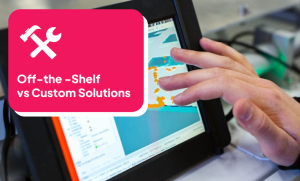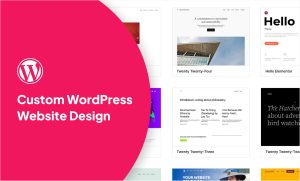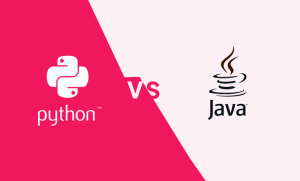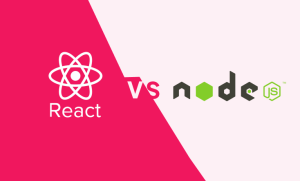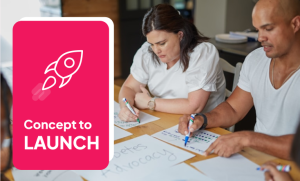App idea validation doesn’t have to be overwhelming—or expensive. Breaking the process down into clear and actionable steps can help you move forward with confidence.
Below, we’ll walk you through each stage—so you can test, learn, and build with purpose.
Step 1: Conduct Thorough Market Research

Before diving into development, it's crucial to understand the market your app will enter. Market research isn’t just about identifying your competitors—it’s about spotting patterns, industry shifts, and user demands before they become obvious to everyone else.
A good app idea alone won't guarantee success—you will need concrete data to validate market demand.
You can start by evaluating current trends within your app’s category. Platforms like Google Trends and AdWords Keyword Planner can help you identify what is gaining momentum in terms of search popularity and where the market is heading.
Compare keyword performance to identify growth opportunities and regional hotspots and take note of any seasonal spikes to time your launch effectively.
Regular keyword analysis helps you understand market dynamics and stay relevant as consumer interests evolve. By analyzing keyword trends strategically, you gain actionable insights—making sure that your app aligns with real user demand and positions you ahead of competitors from day one.
But trends alone don’t tell the whole story. Dig deeper into user intent and explore gaps in the market that others haven’t filled. Review app store charts and tech publications, and keep an eye on startup activity to identify underserved niches and emerging problems your app could solve.
On that note, platforms like Data.ai can help you explore broader patterns, such as underserved niches or rapidly growing verticals.
Look for indicators such as:
- Rising keyword interest around specific app categories or features
- Declining user satisfaction in app reviews across similar products
- Investor focus on specific verticals, such as fintech or mental wellness
Use this data to shape your app’s positioning from day one.
This understanding of the competitive landscape and shifting user behaviors gives you the edge you need to validate your ideas, stand out in a crowded market, and build something people are actively looking for.
Wondering if there’s real demand for your idea? You can schedule a free consultation with App Makers LA and we’ll help you validate it with actual market insights.
Step 2: Perform In-Depth Competitor Analysis

You have to keep in mind that even the most groundbreaking app ideas exist as part of a broader market ecosystem. So, once you know what users are searching for, the next step is to see how well competitors are meeting those needs—and where they’re falling short.
That’s why competitor analysis is an essential part of app idea validation—it helps you understand what’s already out there, what’s working, and where your app can stand out.
Start by identifying both your direct (apps offering similar core features) and indirect competitors (apps solving adjacent problems for the same audience). Use tools like App Radar, Sensor Tower, or Data.ai to find top-performing apps in your category and gain insights around downloads, active users, and revenue models.
Analyze app store category rankings to identify leading industry apps and better understand competition dynamics. These rankings can reveal what users are gravitating toward—and where there might be “gaps” worth filling.
Here are some key areas to focus on when assessing competitor products:
- Monitor app store rankings and competitor keyword strategies to find opportunities for optimization.
- Assess their core functionalities and UX design to identify unique strengths, weaknesses, and user pain points highlighted in reviews and forums. Qualitative research like that will often reveal unique opportunities for innovation that data alone can’t show you.
- Analyze marketing tactics, including ASO methods, social media engagement, ad campaigns, and cross-promotions. Understanding how your competitors attract and retain users is just as important as their product offering.
This tactical deep dive helps you carve out your unique value proposition. Are your competitors all missing a critical feature? Is their onboarding clunky? Does your app offer a faster, more elegant solution?
The better you understand their strengths and weaknesses, the easier it is to build something truly better.
The app market evolves fast. Regularly updating your competitor list and analysis keeps you informed and adaptable, allowing you to tweak your product and positioning as trends shift. Being proactive will help you stay one step ahead of the competition—before they even realize you’re coming.
Not sure how your app stacks up against the competition? Let’s find out together! Book a free consultation with App Makers LA and get expert feedback on your app’s unique edge.
Step 3: Identify and Understand Your Target Audience

One of the most critical steps in validating your app idea is clearly identifying and deeply comprehending your target audience. It comes down to one essential question: “Who is this for?” Without a clear, detailed understanding of your target audience, even the best app ideas can miss the mark.
Thorough research of the market and your target audience helps prevent any costly mistakes by validating the app idea before the development process starts.
Start by defining your users based on your app category, narrowing down to specific niche segments. For instance, if you're developing a travel app, consider targeting conscious progressives or jet-setting retirees to differentiate yourself. The more precise you are, the better.
Next, delve into demographic and psychographic factors. You should analyze age, occupation, income levels, and tech-savviness, and dig deeper into psychographics—values, motivations, and lifestyle choices that influence how people use technology. These will all shape your app's messaging and functionality.
Building out detailed user personas helps you visualize your ideal users and guide your app development and marketing strategies.
Finally, investigate user behavior and uncover pain points:
- Scan competitor reviews and support forums for recurring complaints and feature requests—in other words, unmet needs.
- Map out the customer journey to better understand your audience's goals and challenges.
- Follow online conversations—like Reddit threads, social media groups, and blog comments—for unfiltered opinions and recurring themes that will inform your app's value proposition.
Ultimately, your app's success hinges on its ability to effectively solve real problems for users—keep their needs central during the entire development process. The more you understand your audience’s mindset, the easier it gets to create a product that solves a real problem—and earns their loyalty.
Step 4: Gather User Validation Through Surveys and Interviews

Once you’ve defined your target audience, it’s time to validate your assumptions with real people. Surveys and interviews are two of the most effective ways to pressure-test your app idea and make sure it solves a problem users actually care about.
Surveys are a quick way to collect both quantitative and qualitative data at scale. You can start by creating surveys that include demographic screening questions to ensure you’re engaging relevant participants.
Keep your language neutral and your survey short—ideally under 10 questions—and include a mix of:
- Closed-ended questions to gather more quantitative data (e.g., “How often do you use budgeting apps?”).
- Open-ended questions to get qualitative insights, like motivations and frustrations (e.g., “What is the most annoying part of your current app?”).
You can distribute surveys across channels like email lists, relevant online communities, and social media groups where your target users hang out.
Be sure to define the optimal sample size up front to ensure you’re gathering meaningful insights—not just random noise.
Surveys tell you what users think. Interviews help you understand why.
For interviews, utilize structured guides while allowing flexibility for personalized follow-up questions based on the user's experiences. Conducting semi-structured interviews is particularly effective, as it balances guided questions with freedom for users to express detailed personal perspectives—valuable context that often gets lost in survey responses.
Pay attention to both what users say and how they say it. Tone, hesitation, and body language can all hint at pain points or moments of hesitation. These subtle cues are often goldmines for product development.
| Method | Purpose | Best Practice |
|---|
| Surveys | Gather quantitative & qualitative insights | Use neutral phrasing and demographic filters |
| Interviews | Achieve nuanced user comprehension | Employ structured guides with personalized questions |
| Observation | Understand deeper motivations | Observe body language and vocal cues |
Think you’ve found a gap in the market? We’ll help you confirm it. Book your free consultation with the App Makers LA team and get insight-driven feedback on your app concept.
Step 5: Create and Test App Prototypes

Once you've gathered initial user insights, it’s time to translate your ideas into a low-fidelity prototype. That way, you’ll streamline the development process by clearly communicating design intent to developers, and save considerable time, money, and headaches down the line.
Low-fidelity prototypes help you quickly visualize your app’s core workflows—before writing a single line of code. By quickly crafting basic sketches or wireframes, you can test your core assumptions without getting bogged down by visuals or complex interactions.
As such, these wireframes or interactive mockups—built in tools like Figma, Balsamiq, and InVision—give your team a fast and flexible way to test user flows and interface ideas.
Low-fidelity prototypes are especially effective at identifying gaps and pitfalls in designs early on. In fact, at this stage, prototyping will help you visualize the app's user experience (UX) and identify potential usability issues before they become costly to fix.
Once you're confident your low-fidelity prototype captures the app's core functionality, it's time to test how real users interact with it. You have two options here:
- Free-roam testing, where users explore naturally
- Goal-based testing, where the focus is on completing specific tasks like checkout flows
You can do moderated sessions to observe user behaviors in real-time or opt for unmoderated testing with automated recordings—or go with hybrid testing options, using tools like Marvel and Zoom to capture user interactions and reactions through screen recordings and front-facing camera integration.
Either way, you should encourage testers to narrate their thought process; these insights often reveal pain points you didn’t anticipate.
From there, you can move on to implementing the insights from the initial prototype tests through iterative design improvements.
Follow these three steps for effective iteration:
- Prioritize isolated components: Focus on individual elements like checkout flows, which allows for targeted improvements and clear progress measurement.
- Balance feedback integration: Combine qualitative insights, like usability issues, with quantitative data from surveys to inform precise refinements.
- Align stakeholder input: Schedule structured review sessions to sync with stakeholder input and priorities, which will help you avoid costly project misalignments.
This iterative process ensures your app experience resonates with users before you write code. It's faster, cheaper, and a lot less painful than fixing UX problems after launch.
Not sure how to turn your idea into a clickable prototype? Book your free consultation with App Makers LA and we’ll help you map out your user flow and bring your vision to life, step by step.
Step 6: Launch and Evaluate a Minimum Viable Product (MVP)

Once you know that your prototype resonates with users, it’s time to put your concept to the test—for real. A Minimum Viable Product (MVP) allows you to validate your app idea's market viability with just the core features, minimizing upfront costs while maximizing learning.
Your MVP should solve one critical user problem, and solve it well. Skip the bells and whistles and launch with the smallest feature set that delivers real value. This not only reduces development time and cost but also helps you clearly demonstrate value and focus on what actually moves the needle.
You can start with:
- A single platform (iOS, Android, or web) to simplify deployment
- A lean tech stack that’s easy to iterate on
- An adaptable architecture so you can scale or pivot quickly as you learn more
Track how users engage, where they typically drop off, and what features get used most.
You can combine quantitative data (analytics) with qualitative input (feedback forms, support tickets) to uncover your app’s key strengths—and the friction points holding it back. Layer in AI and machine learning to tailor user experiences based on behaviors and preferences, which can give you a competitive edge.
Your MVP isn’t just a launch—it’s a learning tool that can be used to gather real-world user feedback and performance data:
| MVP Launch Best Practices | Evaluation Methods |
|---|
| Focus on essential features | User surveys |
| Launch on a single platform | In-app analytics |
| Utilize a lean technology stack | Performance KPIs |
| Adopt agile development cycles | Early adopter tests |
| Ensure flexible architecture | Behavior analysis |
This strategic approach efficiently validates your concept, setting the stage for scalable success.
Building your MVP doesn’t have to be overwhelming. Get in touch with App Makers LA, and we’ll help you define must-have features and validate your app idea.
Step 7: Iterate and Refine Based on Feedback

Your MVP is just the first step—real growth occurs when you actively listen to your users and refine your product based on their feedback. User insights aren’t just suggestions—they’re your roadmap for growth.
Analyzing user insights is crucial for improving your app's value and usability. Here's how you can iterate effectively:
- Prioritize User Input: Build structured feedback loops through surveys and interviews to uncover what’s working—and what’s not. Use analytics tools like Google Analytics and Mixpanel to monitor behavior patterns and retention trends in real time. In addition to that, using customer relationship management tools can help you better engage with users and tailor your feedback processes.
- Refine Core Features: Not every feature will be worth keeping. Try to streamline the interface and eliminate friction points, adjust or remove underused features, and refine core functionalities where users find the most value, based on their feedback and usage patterns.
- Optimize UX/UI: Design isn’t just about looks—it’s about how it feels to use your app. Implement A/B tests on layouts, color schemes, and flows to fine-tune the experience. Even small UX and UI tweaks can dramatically improve user satisfaction and engagement.
And if you’re looking to move faster? Consider layering in off-the-shelf tools that solve common pain points without draining your dev budget or timeline.
Need help turning user insights into a polished, high-performing app? At App Makers LA, we specialize in turning validated ideas into powerful, user-centric products. Whether you’re refining your MVP or planning your next iteration, our team is here to support you every step of the way.
